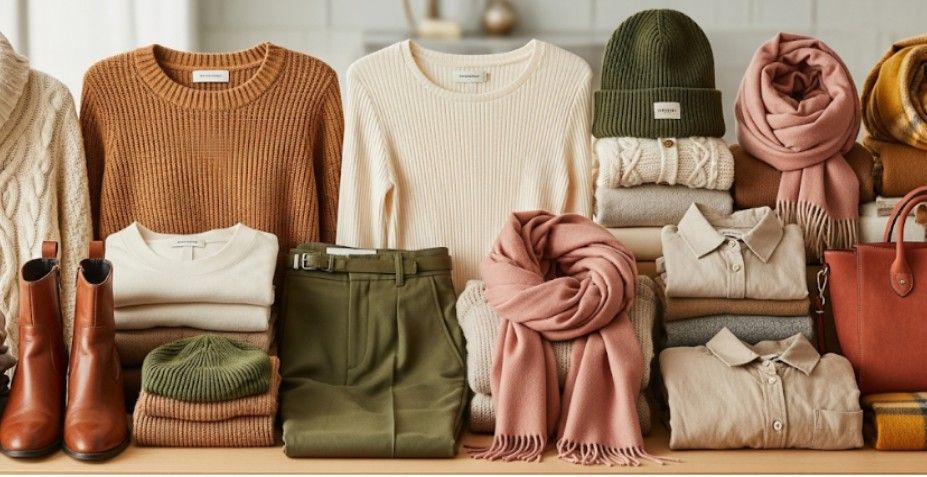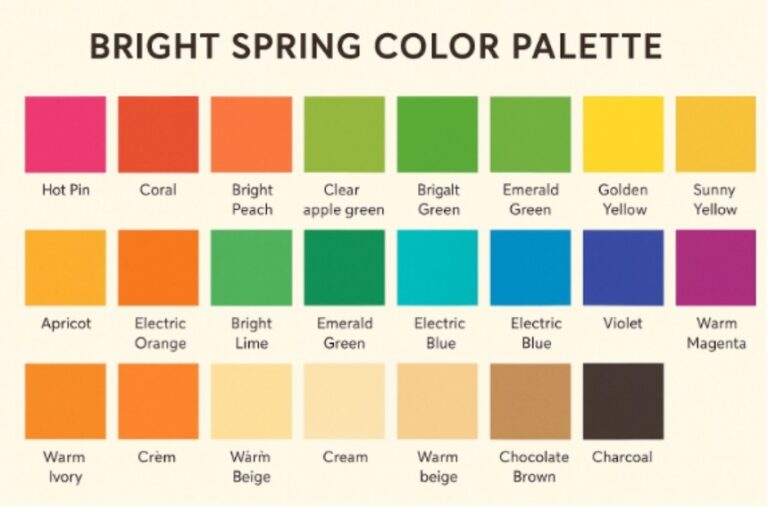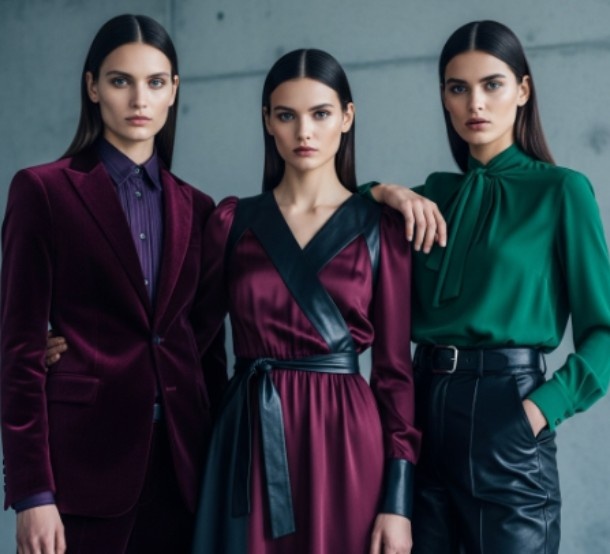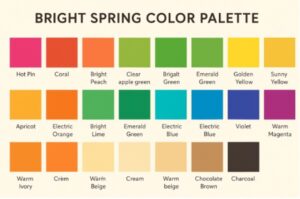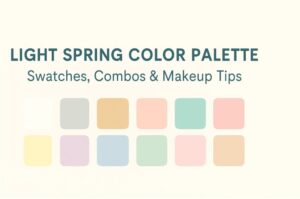I remember the first time I realized I couldn’t pull off black. I loved how sleek it looked on mannequins, but every time I wore it, my skin looked drained.
A friend casually said, “You’re probably a soft autumn.” At first, I had no idea what that meant.
But when I tried clothes in earthy tones—like olive, taupe, and dusty rose—I suddenly looked alive. That’s when I understood the magic of the soft autumn color palette.
What Makes the Soft Autumn Color Palette Unique?
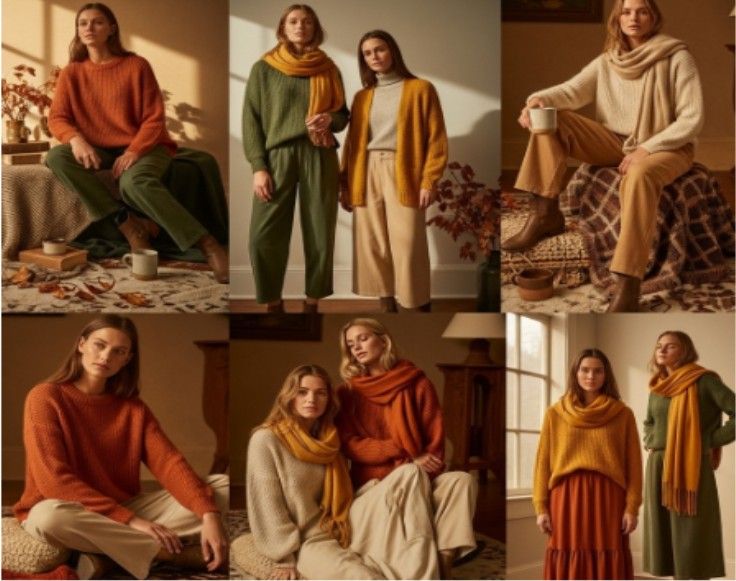
Soft autumn is warm, muted, and low-contrast. It sits between True Autumn and Soft Summer, so it borrows qualities from both. The colors are inspired by nature in that quiet shift between summer and fall—soft light, hazy warmth, and earthy depth.
Your coloring is gentle, so harsh or highly saturated shades can overwhelm you. Instead, muted hues let your skin, hair, and eyes glow in harmony. Think of colors that feel grounded, cozy, and natural—never sharp or icy.
This is why soft autumn is often described as a season of balance. Nothing feels extreme. Everything blends. And that’s what makes it so wearable.
What Are the Core Characteristics of Soft Autumn?
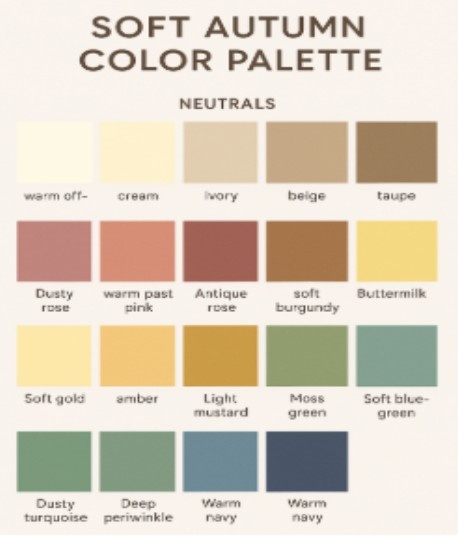
Seasonal palettes follow dimensions of color: temperature, contrast, and intensity. Soft autumn has its own set of rules that help explain why certain shades look better than others.
- Undertone: Warm, with a golden base.
- Contrast: Low to medium. Your features don’t fight for attention; they flow together.
- Value: Medium. Colors aren’t very dark or very light.
- Chroma: Muted. Nothing too bright or bold.
If you feel like soft, earthy colors make you look healthy and vibrant, you’re probably a soft autumn.
What Neutrals Should Soft Autumns Wear?
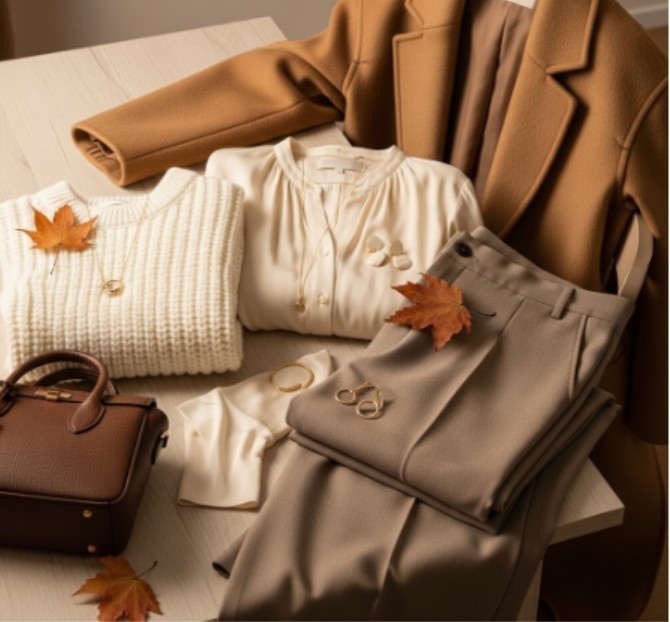
Neutrals are the backbone of your wardrobe. They make mixing and matching effortless. For soft autumn, neutrals should be warm and gentle rather than stark.
| Neutral Shade | Why It Works | Alternatives to Avoid |
| Ivory & Cream | Softer than harsh white | Pure white |
| Camel & Taupe | Warm, earthy, blends well | Cool gray |
| Espresso Brown | Deep, rich, but soft | Black |
| Warm Navy | A subtle dark neutral | Cold, inky navy |
The secret is finding shades with a touch of warmth. That’s what keeps everything balanced with your skin tone.
What Accent Colors Look Best in the Soft Autumn Color Palette?
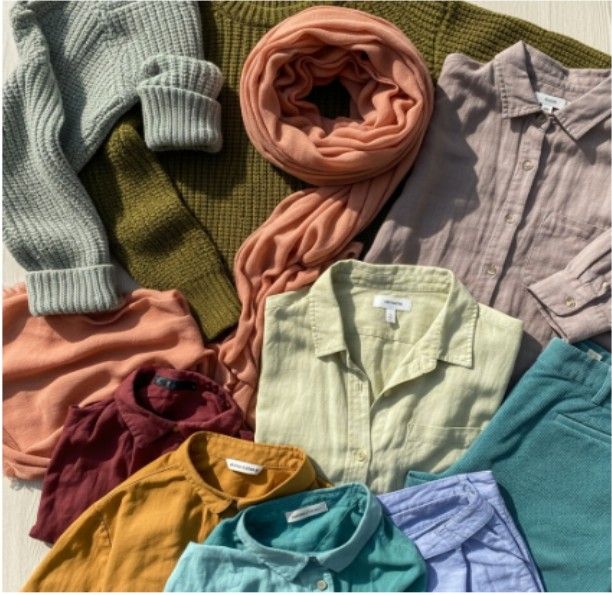
Neutrals ground your wardrobe, but accents bring personality. The soft autumn color palette has some of the most flattering accent shades you can imagine.
- Greens: Sage, olive, moss, and khaki give you that earthy glow.
- Reds & Pinks: Dusty rose, muted salmon, antique rose, and soft burgundy add warmth without intensity.
- Yellows & Oranges: Buttermilk, light mustard, terracotta, and muted peach keep things cozy.
- Blues & Teals: Dusty turquoise, muted teal, and soft periwinkle give you color without cool harshness.
Each accent shade is grounded. None of them scream for attention. They whisper. And that’s what makes them so flattering.
What Colors Are Bad for Soft Autumns?
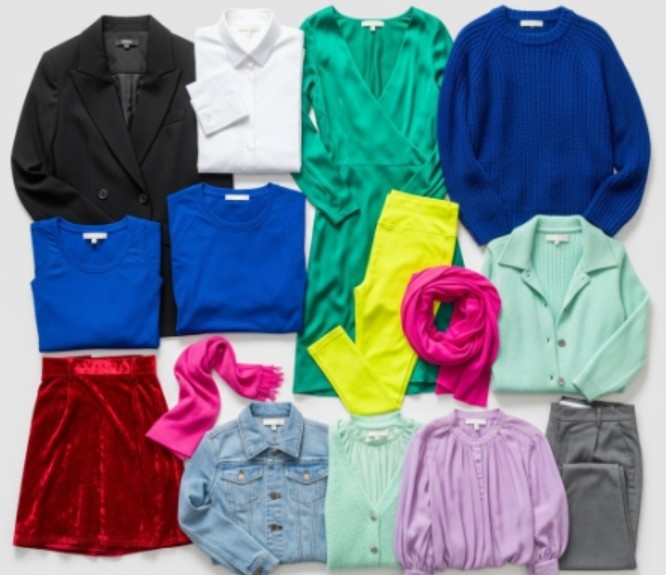
If you’ve ever felt “off” in certain outfits, the culprit might be color. For soft autumns, the biggest offenders are high-contrast or icy shades.
- Stark black and white: Too harsh, too cool.
- Bright jewel tones: Emerald, sapphire, ruby—they’re overpowering.
- Neon or vivid brights: Electric blue, neon yellow, fuchsia.
- Icy pastels: Baby blue, mint green, frosty lavender.
- Cool grays: Blue-based grays drain your warmth.
The good news is that your alternatives—like espresso instead of black, or ivory instead of white—look even better and are easier to style.
Can Soft Autumns Wear Gold?
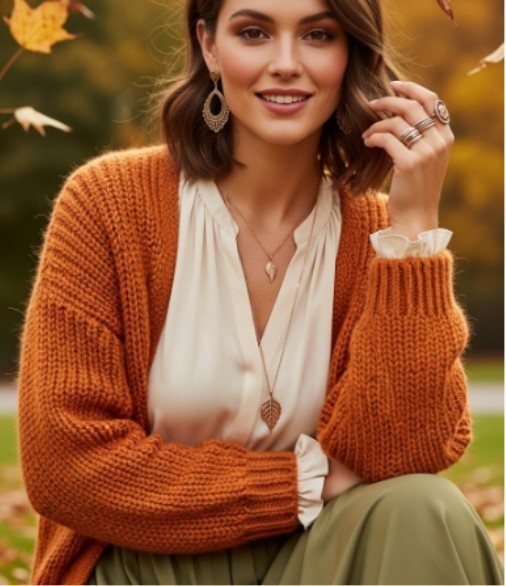
Yes, and they should! Gold complements your natural warmth beautifully, but not every gold works the same way.
Muted and soft finishes are key. Rose gold, champagne gold, antique gold, and even bronze are flattering. Avoid bright, highly polished metals—they can feel too sharp.
If you prefer silver, opt for oxidized or matte versions. Pewter can also work. But in general, warm gold jewelry makes your skin glow in a way cool metals rarely can.
Can a Soft Autumn Wear Black?
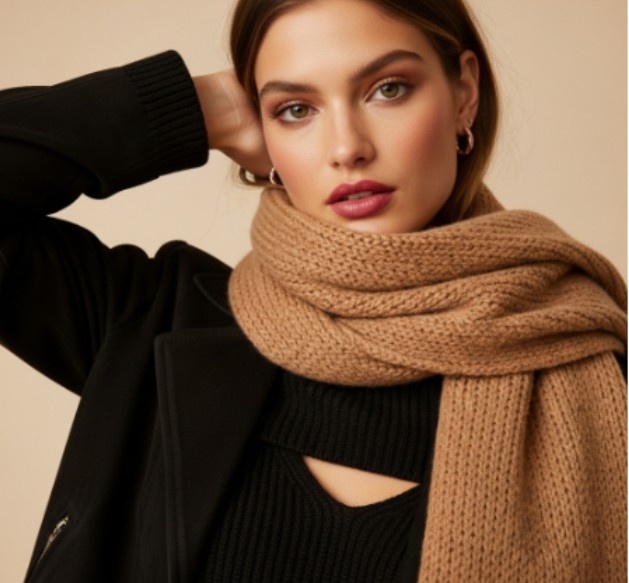
This is the most common question I get. And the answer is layered.
Pure black isn’t ideal for soft autumns. It creates too much contrast and pulls the warmth out of your features. But if you love black, you can still make it work.
Here’s how: keep it away from your face by wearing it as pants, skirts, or shoes. Choose fabrics with texture—wool, suede, washed denim—that soften the harshness.
And pair it with warm accessories near your face. A camel scarf, rose gold earrings, or a dusty pink lipstick can transform how black looks on you.
How Do You Combine Colors for the Best Soft Autumn Looks?
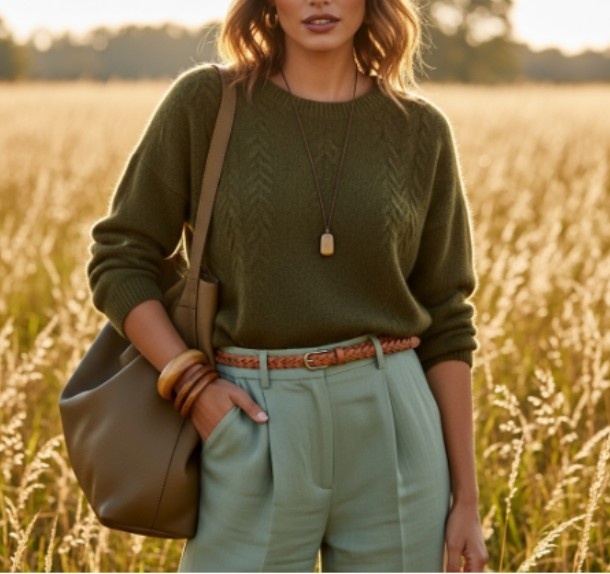
The trick is to lean into low contrast styling. Harsh juxtapositions can look unbalanced on you, but soft transitions look stunning.
- Monochromatic outfits: Olive with sage, or dusty rose with burgundy.
- Analogous combinations: Teal with olive, camel with terracotta.
- Soft patterns: Watercolor florals, muted plaids, or subtle prints.
Accessories matter too. Matte, brushed, or natural materials—wood, leather, bronze—tie everything together.
How Do You Build a Soft Autumn Wardrobe?
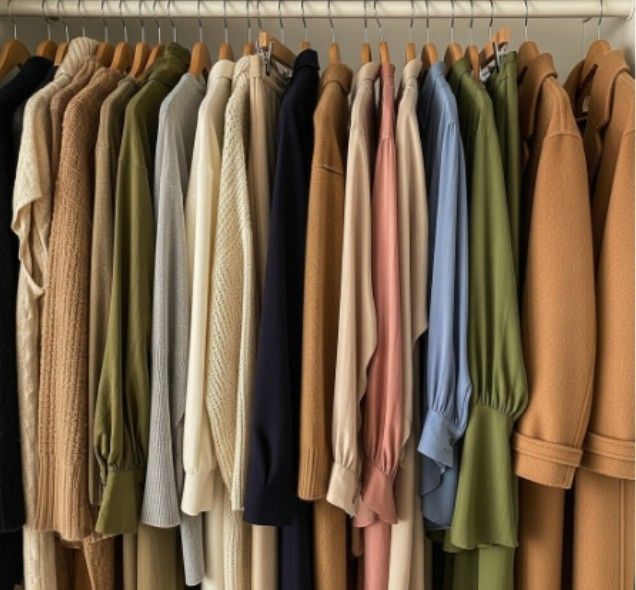
Start with core neutrals like camel, ivory, and warm navy. Add accent colors in greens, warm pinks, or dusty blues. Keep the balance muted and earthy.
Capsule wardrobes work especially well here. With soft autumn tones, almost every piece complements the others. That makes dressing simple, cohesive, and endlessly flattering.
Frequently Asked Questions
1. What colors should I wear if I am a soft autumn?
Stick with muted, warm, earthy tones—olive, dusty rose, terracotta, camel, and ivory. These shades enhance your natural glow without overpowering you.
2. What colors are bad for soft autumn?
Avoid harsh black and white, vivid jewel tones, neon brights, icy pastels, and blue-based grays. They clash with your warmth and soften your natural contrast.
3. Can soft autumns wear gold?
Yes! Muted golds like antique, rose, or champagne gold are perfect. Matte and brushed finishes work best. Bright silver can feel too cold, but pewter or oxidized silver can be a nice alternative.
4. Can a soft autumn wear black?
Black isn’t your best color, but you can make it work by styling it smartly. Keep it away from your face, soften it with texture, and pair it with warm accessories.
Soft, Warm, and Timeless: Why This Palette Works Every Time
The soft autumn color palette isn’t about rules. It’s about harmony. When you wear muted, earthy colors, your features don’t compete—they glow together. That’s the secret.
I always tell my students: color should enhance, not fight. Soft autumn proves that the quietest shades can make the loudest impact.
If you’ve ever felt invisible in black or neon, try sage, camel, or dusty rose. You might be surprised at how much more visible you actually feel.




